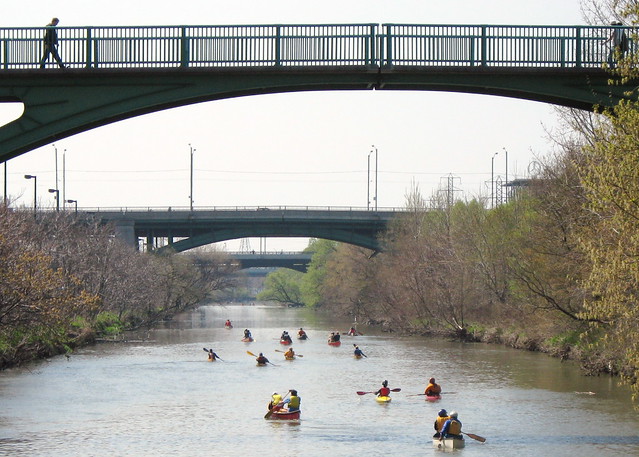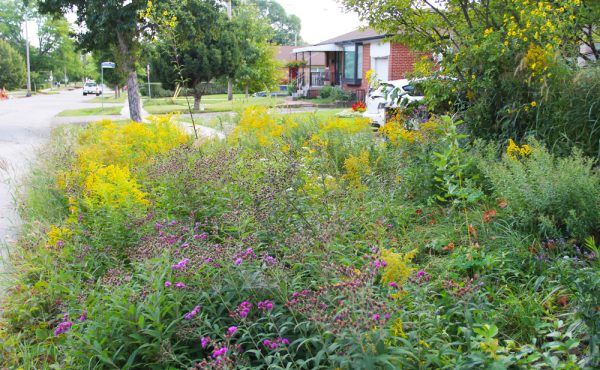It is 8 am on a cloudy Sunday morning and at Seton Park a hundred or so canoeists and kayakers mill around itching to hop in the Don River for the Annual Paddle the Don. These are only the early birds – approximately 630 paddlers will test the waters during the day. A mix of families, fit looking-couples with impressive looking kayaks, and enthusiastic young people, among others, jockeyed for a position in line to the launching point. My Toronto Regional Conservation Authority (TRCA) guide, Ryan, and I wait in line when we are gravely advised to take care round the first corner as a few paddlers had already tipped due to the unusually fast moving water this year. I looked nervously to Ryan, who would be steering (as I did not have the experience), who reassured me that he had canoed on lakes before. The first section of the river before the first portage was no lake today, but with his expert paddling we made it through dry and unscathed.
I have written in previous blogs about the relationship between the urban built form and the natural space it sometimes dominates, embraces or is dominated by. The river was an interesting intersection of all three. Stormwater drains emptied in the river much of the way and stone-cages used to control erosion gave the river bank an odd military trench-like feel. The strength of the river still gets around those erosion controls to carve out new paths for itself; in one area I noted that the river flowed behind the stone cages. At many moments I felt like I caught glimpses of what the river might have been before urbanization affected it. The Don River was once a clear stream, teeming with fish and wildlife before the “founding” of Toronto. On this morning the river did not run clear, though this may be due to spring weather I imagine it has more to due with the dams, stormwater runoff and general pollution. This is not to take away from the experience, however. It was truly magnificent to be gliding along, sometimes in through quiet parks darting overhanging trees starting to bud and other times beside the busy highway observing the roadway from a new angle. At one point we passed a cormorant idly watching each canoeist paddle by and later a couple of mute swans guarding their nests. It was great.
Ryan informed me of the work the TRCA is doing to restore the banks of rivers that is less invasive than those stone cages – for example setting logs into the banks which then accumulate silt and effectively reduce erosion. When one hears about older conservation practices it is amazing to think about how far we’ve come. A gentle approach to conservation that works with the land rather than attempting to dominate it appears more often and with increasing persistence. The TRCA suggests five things we can do to help restore the Don: disconnect your downspout, commit to a toxic free home and yard, conserve water, create natural spaces for water to drain into and call for Greensaver home assessment.
Some things we can not bring back, but if I were to play the game of What If?, I would ask: What if all those rivers that used to exist in Toronto but are now long buried or polluted still existed above ground and I could canoe to the places I live, work and play? Or perhaps I could catch a fish for my dinner in a nearby river running clear and fast? Wouldn’t that make an interesting city scrape?
Photo by Ben Lawson




One comment
Have been wanting to attend one of these for a couple years now. I am curious as to how it smells.